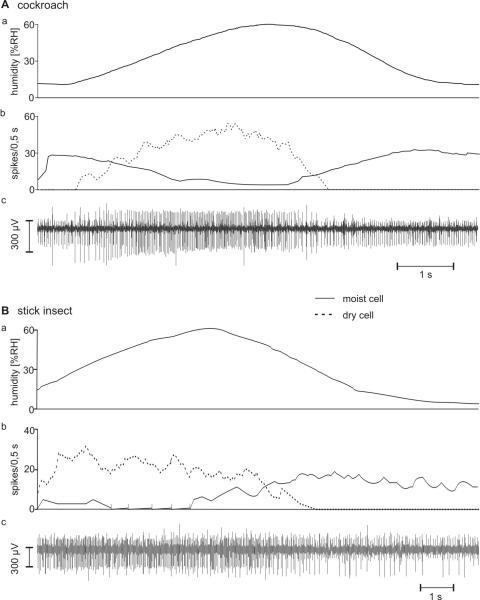Fig. 4.
A and B: Responses of the moist and dry cells to slow and continuous humidity changes. A: cockroach. B: stick insect. a time course of the relative humidity; b time course of the mean frequency (bin width, 0.5 s) of the moist cell (solid line) and the dry cell (dotted line); c extracellular recorded activity. In the cockroach, the moist cell displays larger impulse amplitudes than the dry cell; in the stick insect, impulses from the cold cell tend to be the largest; the moist-cell’s impulses are medium sized and those from the dry cell are the smallest

